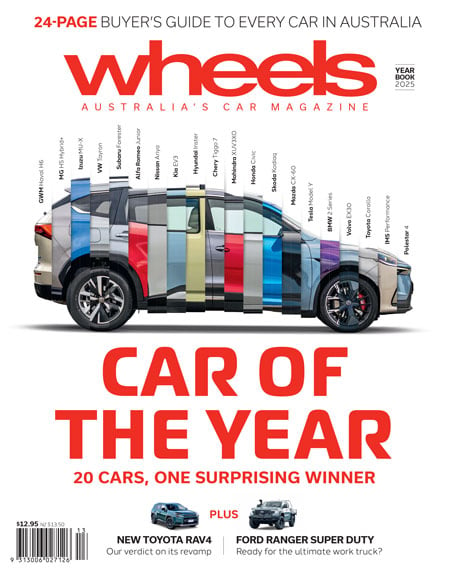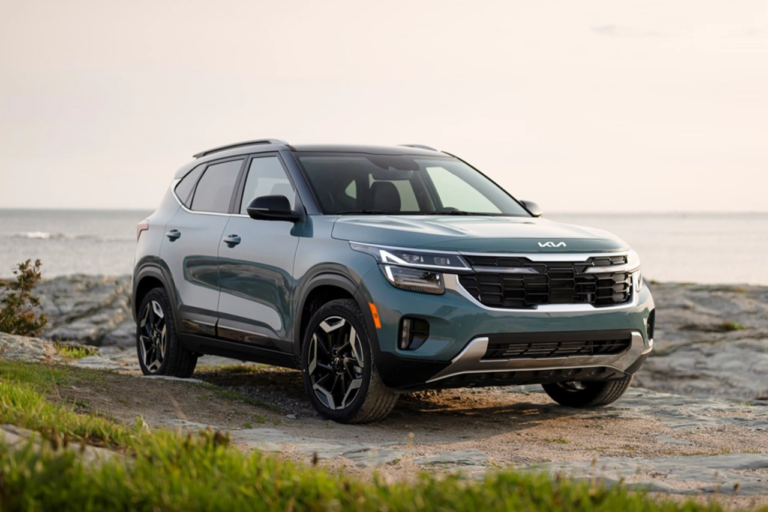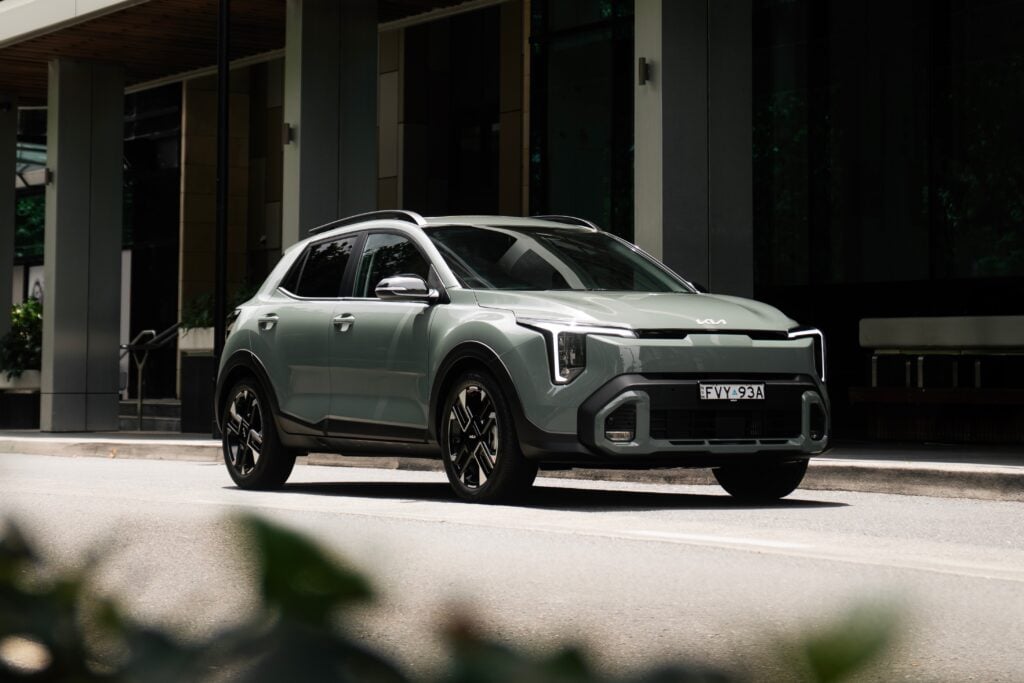
When Damien Meredith first told his South Korean masters he could sell an extra 20,000 Kia cars in Australia, they did not believe him.
But the CEO of Kia Australia persisted with a plan that was hoped to push the company past 100,000 annual deliveries and make it the number two seller in Australia behind Toyota.
Now Kia is less than a month from playing the trump card for its $1 billion gamble on Australia’s love affair with one-tonne utes.
It’s the Tasman and, despite initial doubts – if that’s the right word – about the styling, the momentum is building.
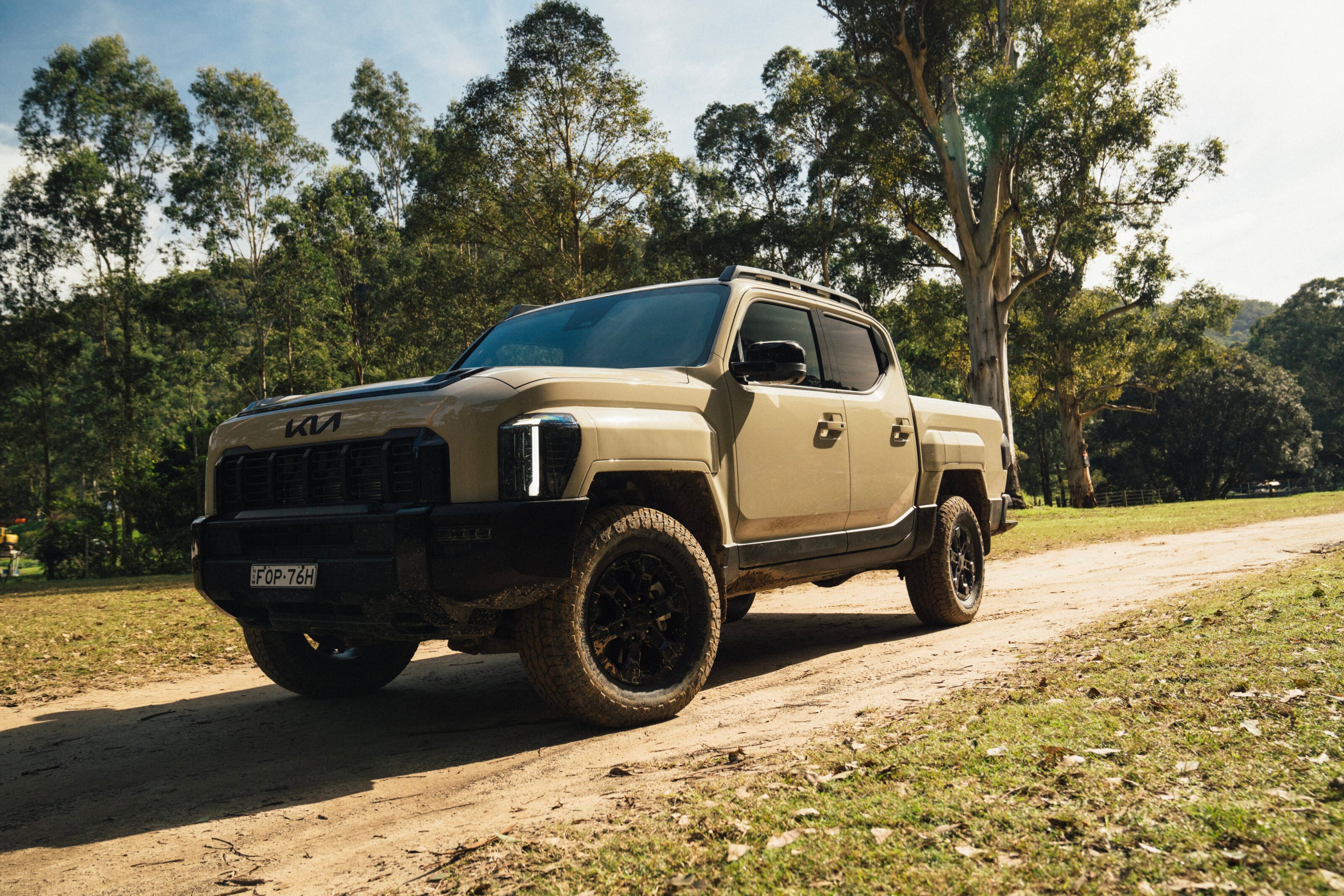
Kia Australia has used a classic trickle-feed approach to the launch of the Tasman, from a high-profile unveiling in Tasmania to an advertising program which first teased and revealed the name, then provided celebrity support from some of Australia’s most successful athletes.
Now Wheels is being given its first opportunity to drive the Tasman.
But don’t expect anything definitive after less than 15 kilometres at the wheel, on a single carefully-chosen off-road climb and over a series of specially-made obstacles, at the gorgeous Glenworth Valley retreat just north of Sydney.
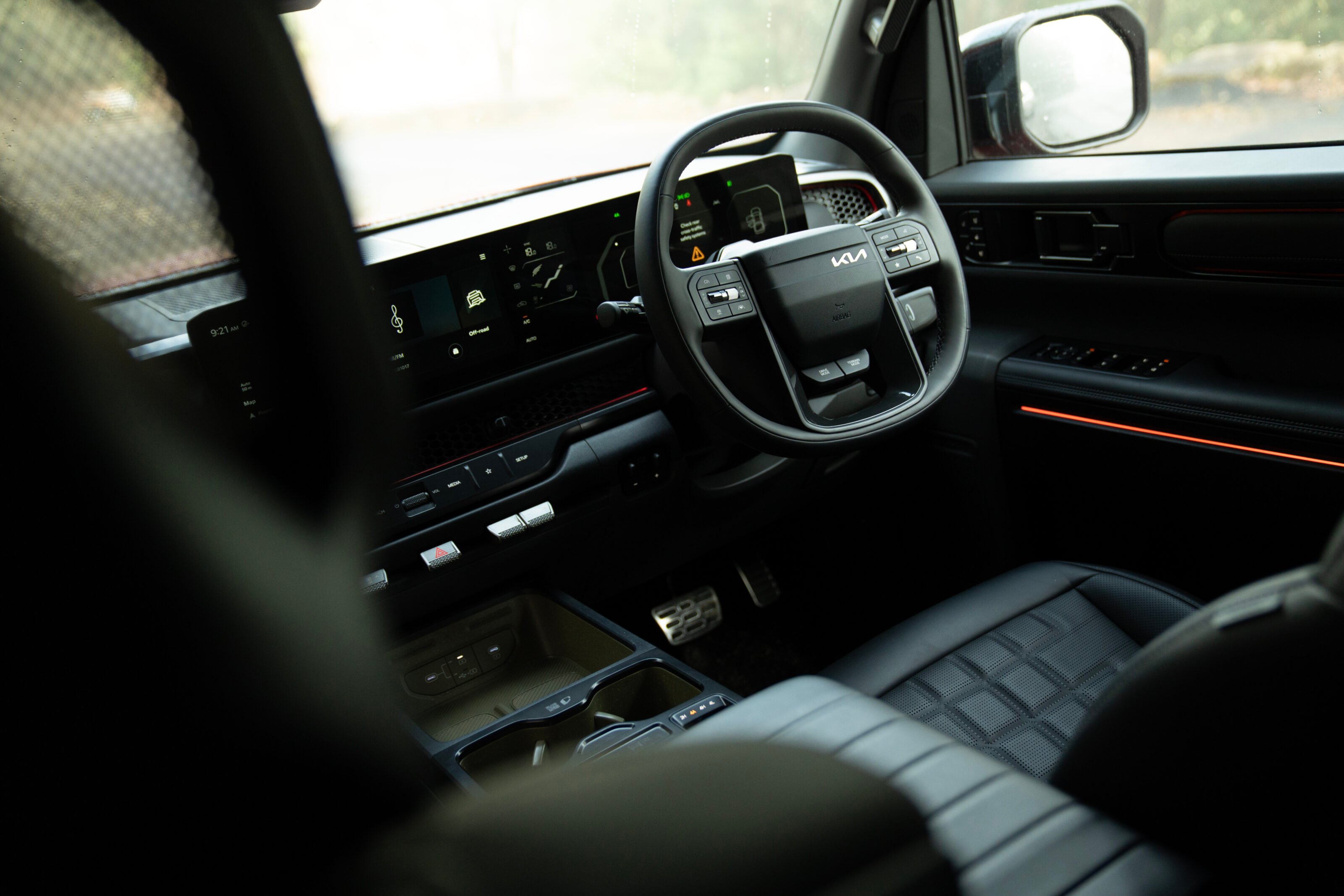
The look of the Tasman is way better with body-coloured flares, the cabin looks and feels good, and the Kia crew is saying all the right things.
But the small group of Tasman utes are all pre-production vehicles and only one – with tan-beige bodywork and trim – is claimed to be in full showroom specification – although even that changes when Wheels helps to highlight a small problem in the transmission program during the climb.
The reaction to the glitch is typical of the whole Tasman program. Engineers swoop, the problem is identified and a counter-measure is fast-tracked to Kia’s technical centre at Namyang in Korea.
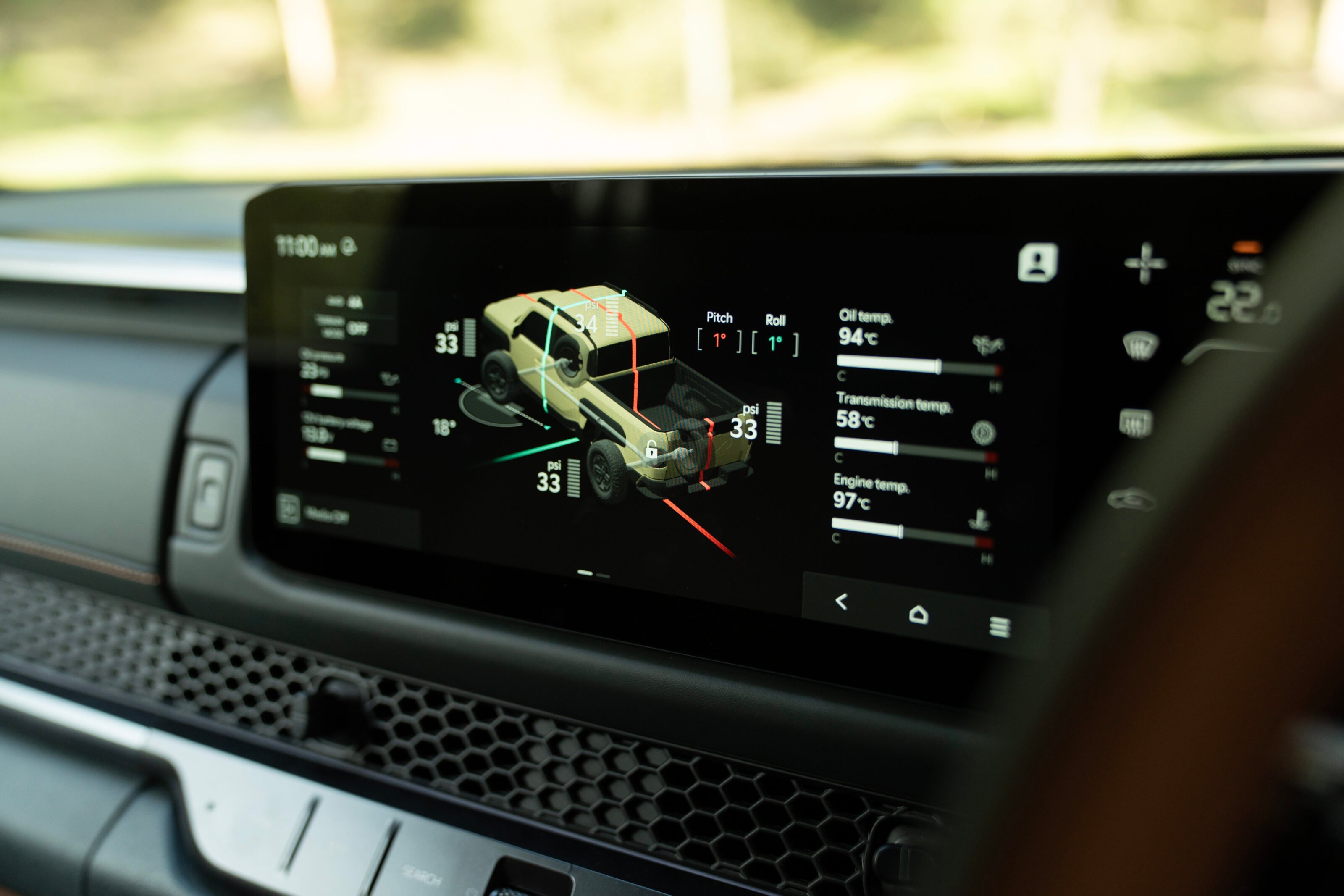
On this basis alone, Kia is clearly listening. But we won’t get into the subjective subject of design . . .
The Tasman program has been running for more than a decade, although no-one can remember the exact time and place of the first pitch.
But Meredith is certain about one thing.
“If it wasn’t for the Australian market we wouldn’t have the car. Period,” he tells Wheels.
“The story has been going for 13 or 14 years, with regards to us making sure the products for Australia are suitable for Australia. The development of Tasman has had a dramatic amount of input from the Australian team.”
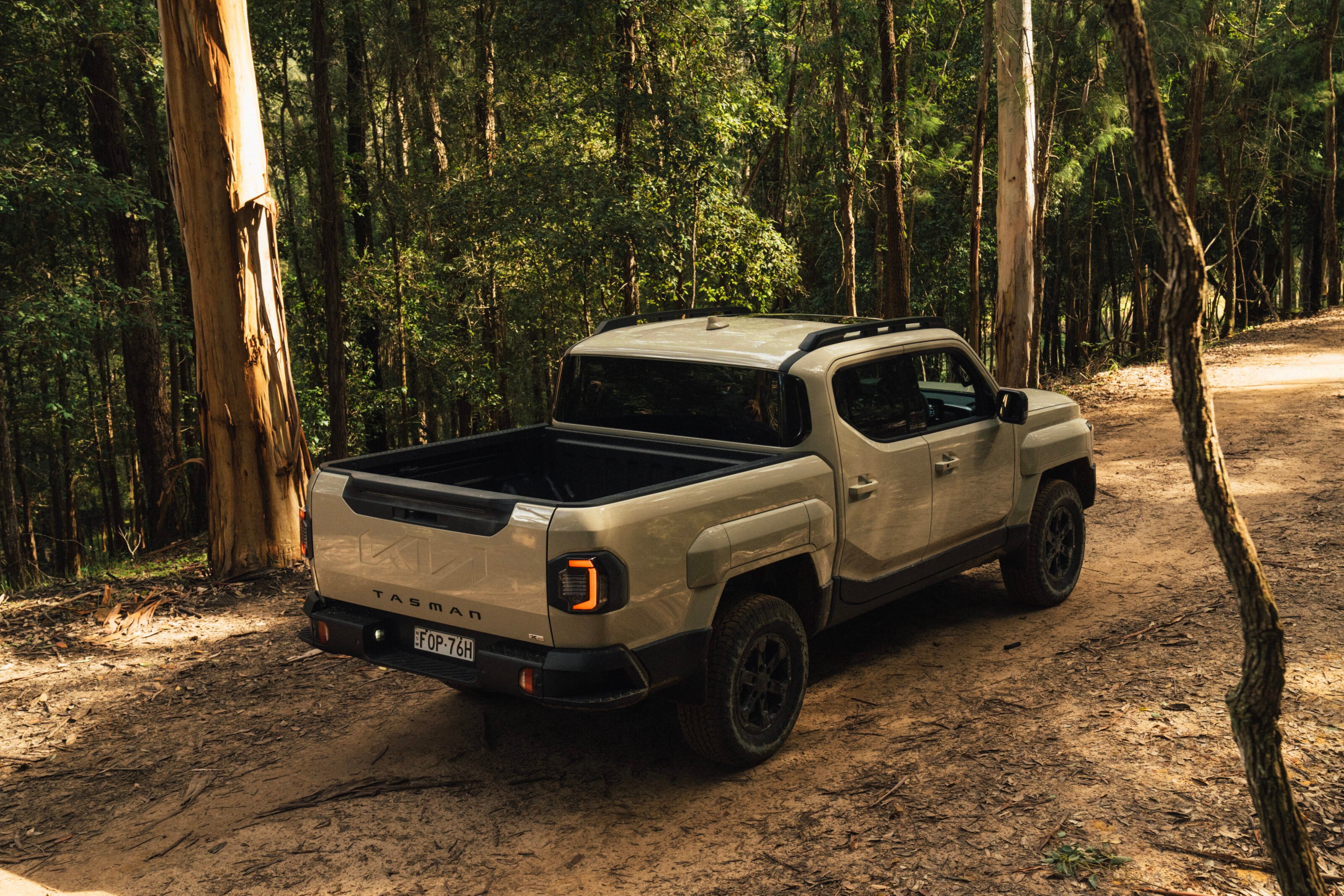
Right now, the focus is on the Tasman 4×4 and its 3.5-tonne towing capacity – with 350-kilo downball weight, 3250-kilo gross vehicle and gross combination mass of 6200 kilos – with trailer-sway control and off-road ability. The 4×4 package covers everything from 265×17 Hankook Dynapro AT2 Xtreme All-Terrain tyres to the locking differential system.
But, at its heart, the Tasman has a basic ladder-frame steel chassis that was created for it, and it alone. The 2.2-litre turbodiesel engine comes from somewhere else in the Kia world, but unique and bespoke stuff is everywhere from the heavyweight cooling package to the shape and size of the steering wheel.
There is lots of talk at the preview about the Tasman’s electronics, with various modes for both towing and off-road work, as the giant display across the dashboard which lets you know what’s happening and why.
The total package seems equal or better than anything else in the class, up with the Ford Ranger and – in some ways – reminiscent of the Land Rover Defender, thanks to the frontal ground-view camera on the upscale X-Pro model and the choice of terrain modes.
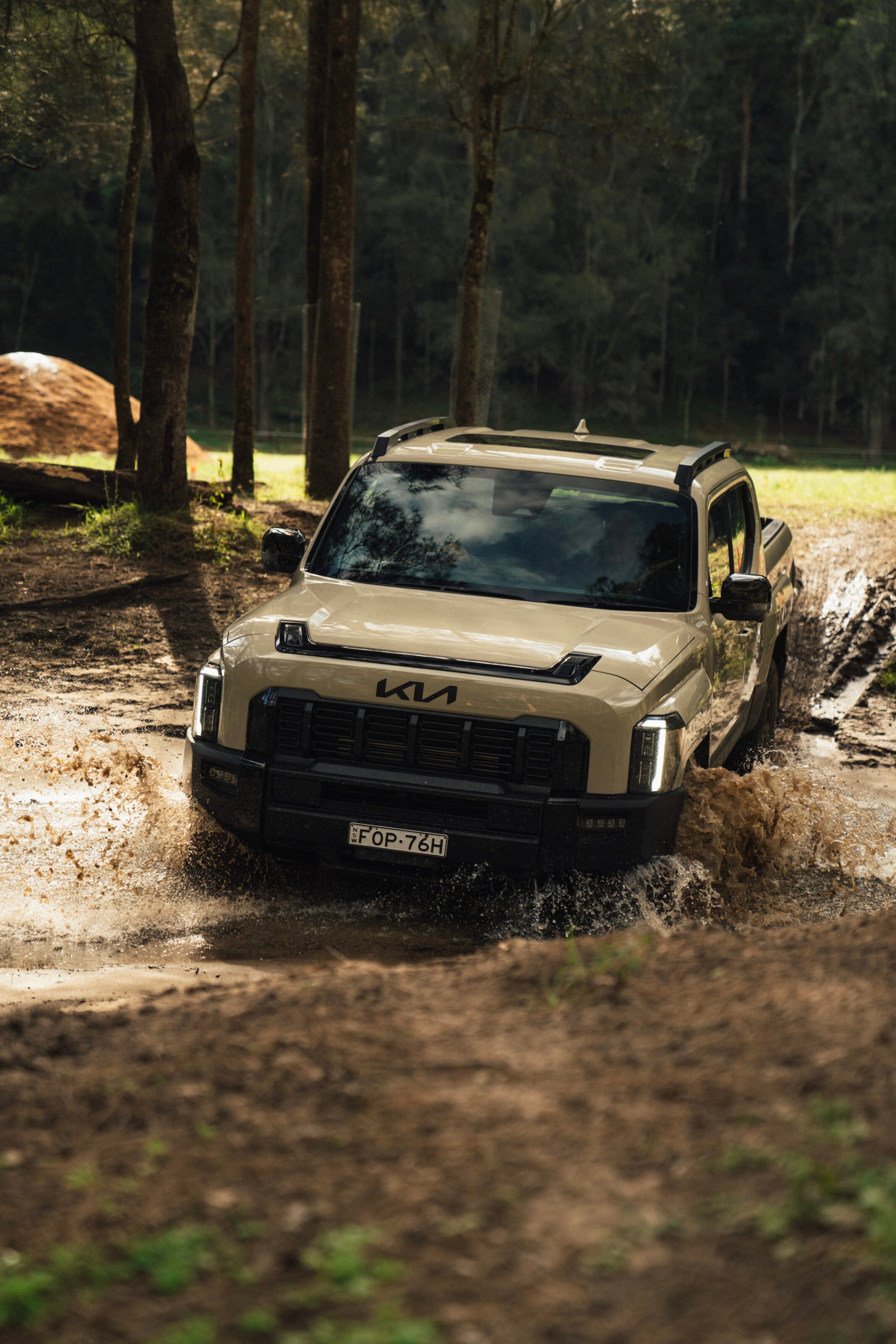
You don’t have to look far to find the Aussie influence in the Tasman. And, no, it’s not the name.
The original Korean pick-up package has a single rear leaf spring with a heavy load rating, where the local suspension has been morphed to a four-spring package with a rising rate.
Why? So the Tasman can ride smoothly as a family car while staying composed while towing or with a heavy load in the track.
There are the sunvisors, too. They are deeper than you would expect in a ute, to block low afternoon glare, with a slide-out panel to give full coverage for sun from the side.
“We had to fight Korea for that one,” says Roland Rivero, product planning manager at Kia Australia.
Kia says the plan is to position the Tasman as a “trusted workhorse”, thanks to everything from the 32.2/26.2 degrees of front and rear departure angle, double-wishbone front suspension with Sachs dampers, rear bump-stop rubbers that vary by model grade – one for S, SX, SX+ and X-Line, another for the flagship and family-focussed X-Pro – and a multi-mode 4×4 system which allows set-and-forget driving until the terrain really gets tough.
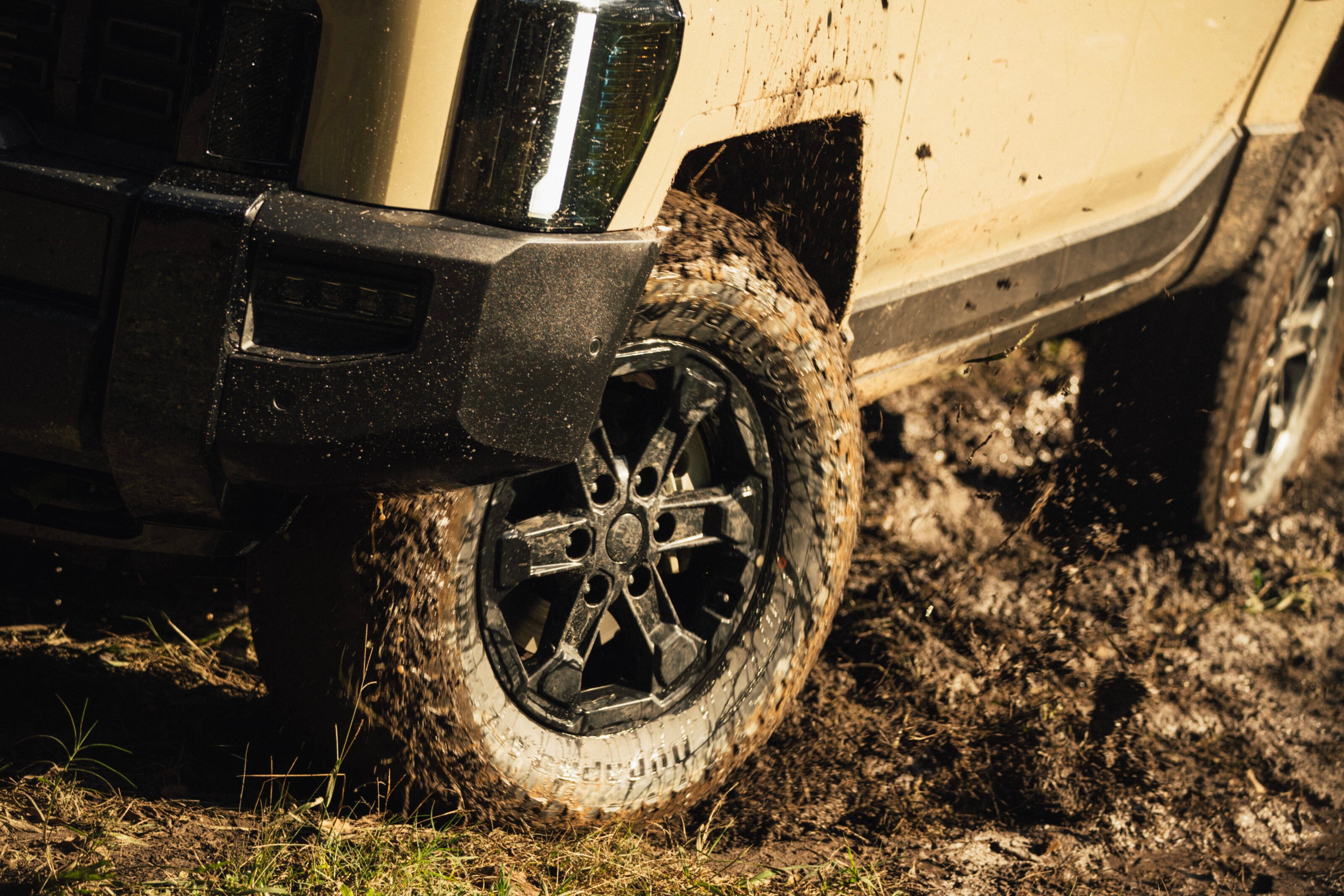
After the lengthy Powerpoint preview across the six model grades from 4×2 S to 4×4 X-Pro, and executive chats, the actual driving time is short and focussed. There is really just the one Tasman, with the X-Pro grade to present the best package.
But it’s easy to pick the smoother and more-compliant ride in the Tasman with full Aussie suspension, compared to the more-jittery Korean set-up, to sample the easy crossing of a muddy creek, and the ability to walk over typical small-ish four-wheel drive obstacles.
The cabin is impressive – with adjustable rear seats in the X-Pro which feel like ‘premium economy’ with sliding and tilt settings – and smart design work everywhere. The steering wheel is trendily ovoid, not round or square, and the switches and controls are well located with a substantial feel.
Time after time, the Tasman program is highlighted by a single sentence from Rivero.
“This is an area where Kia Australia had some influence. Our pestering has paid off,” he says.

KIA Tasman – Preliminary details
| Starting price | $42,990 |
|---|---|
| Vehicle style | dual-cab pick-up |
| Models | S (4×2), S (4×4), SX, SX+, X-Line, X-Pro |
| Engine | 2.2-litre four-cylinder turbo-diesel |
| Outputs | 154kW/440Nm |
| Transmission | 8-speed automatic, multi-mode four-wheel drive |
